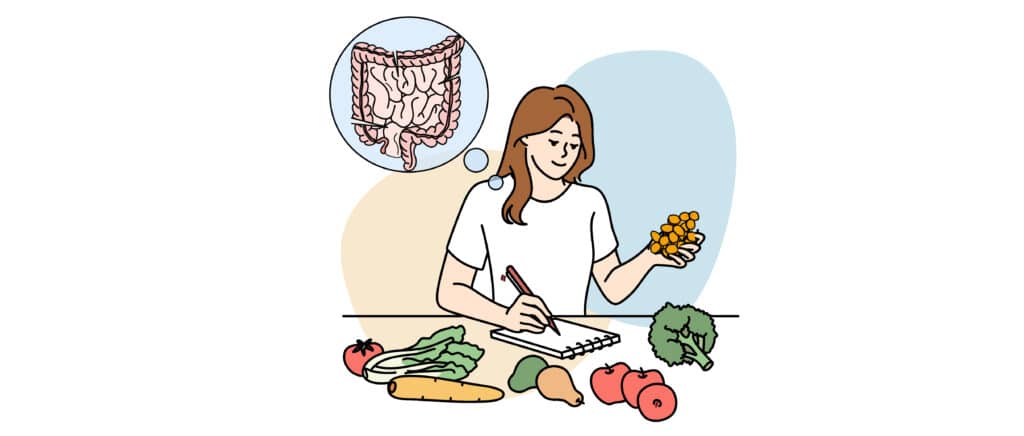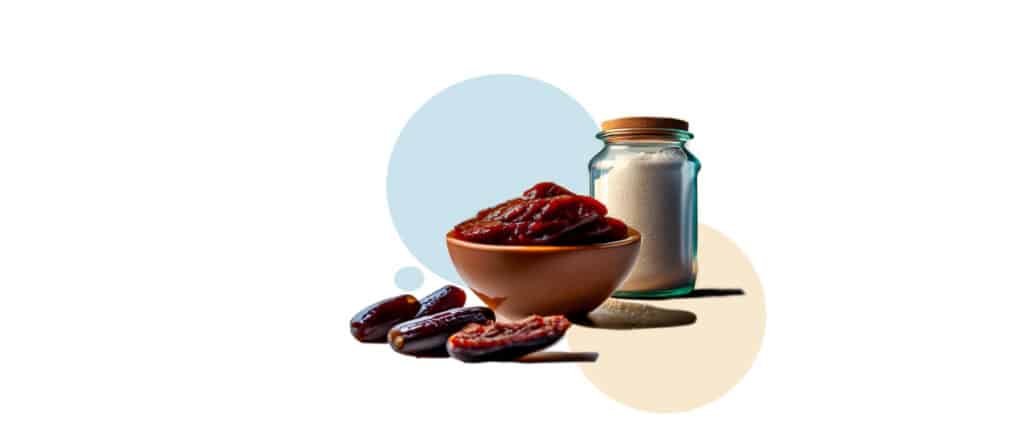Key Stroke Symptoms, Prevention, & Treatment: Know the “FAST” Facts
- Wellness Healthy Lifestyle
- November 17, 2021
- 21 minutes read
- A stroke happens when blood flow to the brain is blocked by a blood clot or burst blood vessel.
- Stroke is the 5th leading cause of death in the U.S.
- There are three main types of stroke: ischemic, hemorrhagic, and TIA.
- The letters in the word “F.A.S.T.” are used to remember signs & symptoms of a stroke.
- Stroke diagnosis is done to identify the severity, location, and cause.
- The risk of stroke can be reduced by following preventive measures and adopting a healthier lifestyle.
Will you be prepared should a stroke strike? There’s a great deal to consider when faced with this health emergency. Both heart attacks and strokes are caused by blockages that prevent the adequate flow of blood. In this context, a stroke is sometimes referred to as a “brain attack.”
Heart disease has received a great deal of attention in the media. However, it’s just as important to know more about stroke. This includes its warning signs, risk factors, preventive measures, and treatments. Similar to heart disease, stroke affects thousands of people each year. More importantly, it can also be life-threatening.
Think about how quickly 40 seconds go by. Believe it or not, every 40 seconds someone in the United States has a stroke. Additionally, every four minutes, someone dies of it. These statistics sound alarming. However, improvements have been made in death rates over the past few decades. Let’s explore everything we need to know about strokes.
What is a Stroke?
A stroke is a condition that occurs when a blood vessel in the brain is either blocked by a blood clot or breaks open. This is very concerning because parts of the brain cannot get sufficient blood and oxygen. These brain cells die as a result. Because of this, a stroke can cause severe physical or mental disabilities. In the worst case, it can result in brain damage and death.
There are three main types of stroke:
- Ischemic stroke – This is the most common type of stroke. It is caused by a blood clot that interrupts the flow of oxygenated blood to the brain.
- Hemorrhagic stroke – This type of stroke occurs when a blood vessel in the brain bursts and blood is unable to flow into the brain. Both high blood pressure and burst arteries can cause a hemorrhagic stroke.
- Transient ischemic attack (TIA)– This is considered to be a “mini-stroke” because the blood clot is a temporary occurrence. It is a warning sign of a more serious stroke that may happen in the future.
Stroke Fact & Figures
Here are some noteworthy statistics about strokes:
- Stroke is the fifth leading cause of death and the leading cause of disability in the U.S.
- Every year, about 800,000 people in the U.S. experience a stroke.
- Approximately 87% of strokes are ischemic strokes.
- Stroke is the leading cause of serious long-term disability, particularly in people over the age of 65.
What are the Signs and Symptoms of a Stroke?
There are a number of warning signs that we should be aware of and seek help immediately.
- Sudden numbness or weakness on one side of the body, including the face, arm, or leg.
- Sudden difficulty speaking or understanding speech.
- Sudden changes in vision in one of or both eyes, such as double vision.
- Sudden problems with walking, balance, coordination, or dizziness.
- Sudden severe headache, nausea, or vomiting.
There is a quick way to assess the common signs of stroke in ourselves or someone else. The letters in the word ‘FAST” are used as an acronym for the warning signals.
F – FACE: Can the person smile without any drooping on either side of the face?
A – ARMS: Can the person raise both arms, or does one arm fall downward?
S – SPEECH: Is the person able to repeat a simple sentence? Is the speech slurred or difficult to understand?
T – TIME: Remember to Call 911 as soon as possible if any of these signs are present.
What are the Risk Factors for Stroke?
The risk factors for stroke are more complex because there are various forms of stroke. Some of these factors cannot be changed, while others can be reduced with a healthier lifestyle. For example, we have no control over our age, sex, or ethnic background.
The risk of a first stroke is almost twice as high in African-Americans than for Caucasians in the U.S. The highest death rates also occur in African-Americans. However, this statistic has also been increasing for Hispanics in recent years. In addition, Native Americans also have a higher incidence of stroke than Caucasians.
Age is another risk factor because the risk increases as we get older. This is due to the accumulated cell damage associated with age. That said, strokes can occur at any age. However, some of the risk factors may differ in young people than older people.
Studies show that strokes in younger adults (ages 18-54) have been increasing. It’s imperative to pay close attention to the risk factors and warning signs. They can occur at any age.
Women and men also have some differences in stroke risk. Women have a higher risk of stroke at younger ages than men. Women also tend to live longer than men, so their overall risk of stroke is greater than for men.
Family history is another risk factor. Having a close relative who had a stroke before the age of 65 increases the risk for stroke. In addition, having had a stroke makes you 10 times more likely to have another one in the future. About 25% of people will have another stroke within five years of their first stroke.
What are the Ways to Reduce the Risk of Stroke?
It’s essential to know the warning signs for stroke. It’s also important to know how you can decrease the likelihood of getting a stroke. Among the risk factors are high blood pressure, high cholesterol, diabetes, and heart disease. Modifiable factors that are related to your lifestyle include lack of exercise, smoking, and alcohol consumption. In fact, 90% of strokes are preventable with a number of lifestyle changes. These include but are not limited to:
- Eating a healthy diet, including three to five servings of fruit and vegetables each day.
- Limiting salt intake to less than 1,500 mg. daily.
- Quitting smoking.
- Maintaining a healthy weight.
- Exercising on a regular basis.
- Managing high blood pressure, high cholesterol, and diabetes.
How to Perform Stroke Diagnosis?
Strokes are considered to be a medical emergency. Therefore, evaluations usually begin in the ambulance on the way to a hospital. It is critical to restore blood flow and oxygen to the brain as quickly as possible. This is done to reduce damage. Medical personnel will ask about symptoms and the patient’s medical history. They will also check their blood pressure readings and any signs related to the “FAST” test. A neurological (nervous system) exam will be also performed. This is done to check if the different parts of the brain are functioning. This is necessary to diagnose the severity of the stroke and the location of the brain damage.
Additional tests will be done at the hospital, including some type of brain imaging. There are several different types, including CT scans and MRI. A CT scan of the head is usually one of the first tests to evaluate a stroke. It can show if there is bleeding in the brain, damage to brain cells, or other problems that can cause stroke symptoms.
Both of these tests show the location and degree of brain injury, but MRI imaging is more detailed than a CT scan. An MRI shows brain changes caused by stroke sooner than a CT scan. It can also detect any bleeding or blood flow issues. The results from an MRI can rule out other conditions, such as tumors. These can cause symptoms similar to that of a stroke.
A carotid ultrasound test is often used with a CT or MR angiogram. This is done to check whether any plaque (fatty deposits) has built up in the arteries and is blocking blood flow to the brain.
Additional tests are used to show the electrical activity in the brain. The two most common tests are EEG (Electroencephalography) and Evoked Response. For an EEG, electrodes are placed on the head to show brain waves. An Evoked Response test records electrical impulses related to hearing, vision, and other body sensations.
Although there are no blood tests to diagnose a stroke, various blood tests may be done to assess the cause of the stroke symptoms. A complete blood count (CBC) gives information about the overall health of the blood. Other tests measure the rate of blood clotting, thyroid, and sugar levels. It can also show how much cholesterol is in the blood. All of these tests help determine the most effective treatments for each type of stroke.
Blood flow tests often use ultrasound to show the condition of the arteries. Among these tests are carotid ultrasound and Doppler ultrasound. Medical procedures, such as an angiogram, are other means of measuring blood flow by taking pictures of the blood vessels.
What are the Treatments for Stroke?
There are three treatment stages for stroke – prevention, immediate treatment, and rehabilitation. Preventive measures are aimed at addressing the modifiable risk factors for stroke. In the event of a stroke, treatment by promptly dissolving or removing the blood clot is the most crucial step. Sometimes medicine, surgery, or other procedures may be required to stop the bleeding. Following immediate care, the primary treatment is focused on recovery from a stroke. Medication is the most common treatment for stroke. Drugs are used to both prevent and treat strokes, such as medications that make the blood thinner or break up blood clots.
Since stroke is the leading cause of disability, the demand for rehabilitation continues to increase. Strokes can affect the whole body by causing paralysis or weakness on one side of the body.
If the stroke affects the right side of the brain, both movement and sensation on the left side of the body may be impaired. Brain damage on the left side of the brain may affect speech and language. It can also cause problems with thinking, learning, memory, comprehension, and decision-making. Pain or numbness may also occur, and some stroke patients experience depression as well.
Most people with strokes need some type of rehabilitation. This can either be short-term or long-term. There are specific rehabilitation programs and facilities. Some patients may also receive care at home. The goal of rehabilitation is to help people function as well as possible. This in turn will help them resume their normal lives.
Rehabilitation consists of physical therapy, speech therapy, and occupational therapy. These are all done to help people overcome disabilities. In cases of mild strokes, this may take less time to achieve. Other individuals need extensive rehabilitation. Some may even have permanent disabilities from a stroke. Rehabilitation may take weeks, months, or several years. This mainly depends on the location and extent of the impairment to the brain.
Since stroke remains a leading cause of death and disability, understanding the risk factors and prevention strategies is essential. Knowing the signs and symptoms of stroke will lead to quicker attention and more immediate care. We need to remember that a stroke can happen at any age. However, many of the risk factors can be lessened by modifying our lifestyle. It all starts with a healthy diet, exercise, smoking cessation, and controlling our blood pressure, cholesterol levels, and diabetes. A team of health care professionals can develop a plan that is best suited to our lifestyles. This will help address our individual health concerns. Continued advances and collaborative efforts in research, education, and treatments will also help reduce the incidence of stroke. This will also improve overall survival rates.
Summary
Stroke affects thousands of people every year. It can cause severe disability or death at any age. There are various risk factors, many of which can be controlled with lifestyle modifications. Stroke prevention is the best defense. In the event of a stroke, current diagnostic tools and effective treatments can make a huge difference in the outcome. Where stroke is concerned, time is of the essence, We would need to seek immediate care. The sooner a stroke is treated, the better the chances of reducing brain damage. This will eventually lead to a more complete recovery. Recognizing the “FAST” signs can be lifesaving for ourselves and others!
Scientific Information
- Computed tomography (CT) scan – This test uses X-rays to take pictures of the brain. A CT scan of the head is usually one of the first tests used for a stroke.
- Magnetic resonance imaging (MRI) — MRI technology uses a strong magnet and radio waves to take pictures of the brain.
- CT or MR angiogram – An angiogram is an X-ray of the blood vessels and blood flow through them. A dye is injected into the veins to show a detailed picture of the blood vessels after a stroke.
- Ultrasound – This test uses sound waves to create an image of the brain and blood flow through the arteries.
- Carotid ultrasound – Carotid ultrasound is a test that uses sound waves to show pictures of the carotid arteries, which supply blood to the brain.
- Transcranial Doppler (TCD) ultrasound – Doppler ultrasound is a test that uses sound waves to measure blood flow.
- Electroencephalogram (EEG) – This test records electrical activity in the brain to rule out whether stroke symptoms are caused by a seizure. During this test, sticky electrodes are placed on your head, with wires attached to a machine. The machine records the electrical signals picked up by the electrodes.
- Electrocardiogram (ECG or EKG) – This test detects and records your heart’s electrical activity. It can help your doctor find out if atrial fibrillation caused the stroke.
- Evoked Response test – This test measures how the brain handles different sensory information. Electrodes record electrical impulses pertaining to hearing, body sensation, or vision.
- Complete blood count (CBC) – This blood test measures the overall health of your blood and helps diagnose infection, anemia, or other problems in the blood.








